What is fat and how to care for a plant?
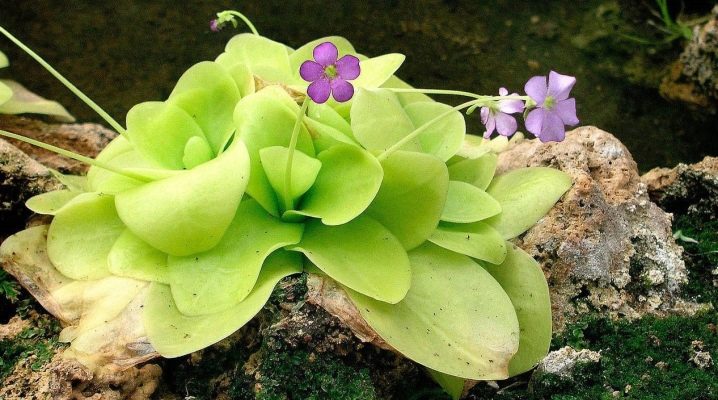
Zhiryanka is a perennial insectivorous plant included in the Red Book due to the threat of its extinction. The culture attracts flower growers with delicate flowers, which in appearance and aroma resemble violets. It is worth considering in more detail the peculiarities of the culture, the methods of its cultivation and the most common types.
general description
Chiryanka - Pinguicula in Latin - is a popular compact plant that belongs to the pemphigus family. It grows mainly in swamps, it is found mainly in the Northern Hemisphere in temperate climates. And also you can find zhiryanka in the Arctic regions and America. The main homeland of culture is Europe, where there are over 12 species.
Zhiryanka belongs to the group of predatory plants, along with the sundew, and insects form the basis of nutrition for this group. The plant lures them with fragrant leaves, on the surface of which there are small sticky hairs. The leaves themselves are collected in large and lush rosettes, the height of which reaches about 15 cm. Once a year, zhiryanka forms flower stalks of great length. This happens in the spring, and during this period the culture pleases with pleasant flowers of purple shades and small sizes. Among the varieties, you can often find plants that produce yellow, white and blue flowers.
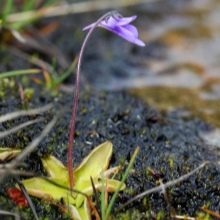
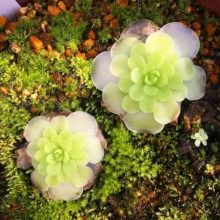
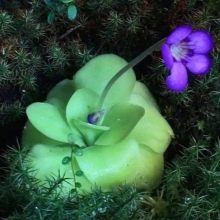
Popular species and varieties
Chiryanka grows in different parts of the world, preferring northern and humid regions. On average, over 80 plant species are distinguished, of which more than 12 grow in Europe, and 6-7 are found in Russia. Thus, it is not at all necessary to go somewhere far to find a predator. It is enough to take a walk in the nearest Russian swampy forest, and carefully examine the grass, moss and other vegetation.
Zhiryanka is not able to boast of long roots, as it prefers to develop in width. Therefore, it spreads through the swamp, forming a large trap for the curious insects that it preys on. It is worth considering several popular species that are found in Russia, Europe, etc.
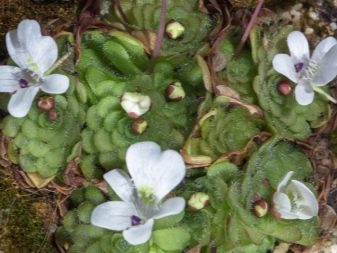
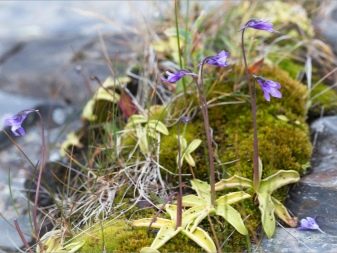
Ordinary
The plant is found mainly in the regions of Europe, it also prefers the climatic conditions of America. Variety characteristics:
- sockets - compact size;
- leaves - oblong, dark green, sessile;
- stems are powerful and long.
In spring, Zhyanka forms small drooping flowers of blue and purple shades.
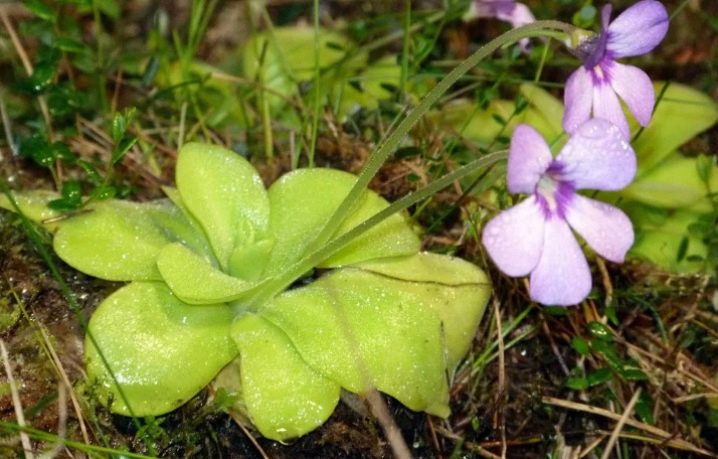
Moranskaya
A variety that grows in the humid regions of South America. The peculiarity of the plant is its divided life cycle. In the Moranian zhiryanka, life is divided into two periods.
- Wet. At this stage of its life, the plant forms carnivorous leaves of a bright yellow-green color. And also there are leaf plates of burgundy shades. Medium-sized rosettes, flower stalks often appear closer to the middle of summer, each contains from 1 to 7 small lilac buds.
- Dry. This stage begins with the onset of the first frost. The plant renews the leaf rosette from summer to winter, forming smooth, elongated leaves, the surface of which is devoid of glands for catching insects.
The last period is considered a dormant period when the fatty woman stops catching insects.

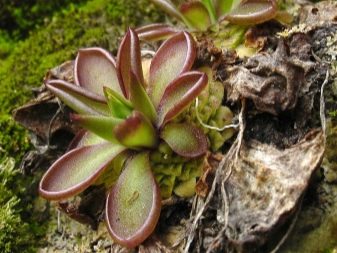
Round-cut
It is a fairly compact plant that covers larger areas with age. Specifications:
- leaves are oval, up to 3 cm long;
- rosette - root type, flat;
- flower diameter - up to 3 cm.
The leaf plates are arranged in several rows and have a pleasant silvery, gray and dark lilac or purple hue. The color of the buds that the fatty plant forms closer to spring is violet-purple or rich lilac, which looks harmoniously with the leaves. The variety prefers to grow in areas with high humidity, is undemanding to care for, and is suitable for growing at home.
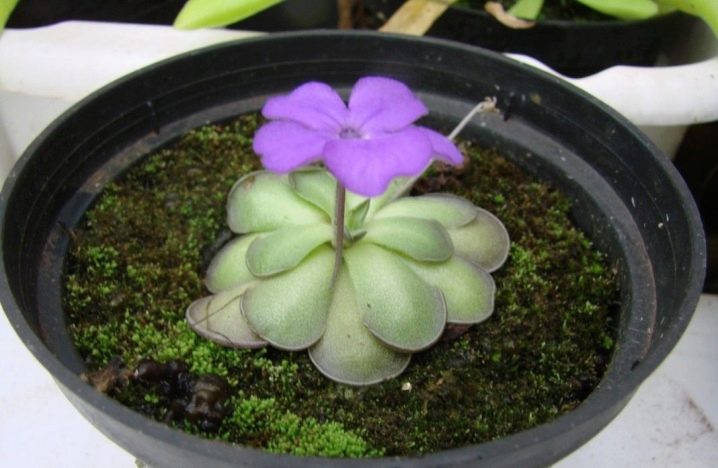
Large-flowered
One of the most spectacular varieties of zhiryanka, attracting attention with its unique beauty. A number of plant features are distinguished.
- Large flowers, the petals of which are collected in unusual tubes in the form of gramophones.
- Dark green leaves, slightly elongated and covered with fine hairs.
- Peduncles and stems that grow over time.
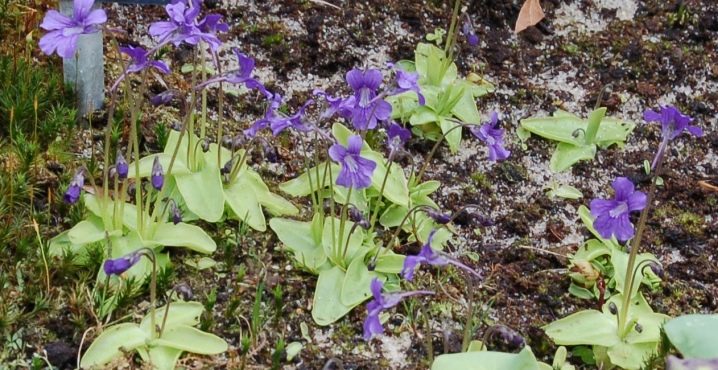
Distantly, the buds of large-flowered zhiryanka resemble aquilegia flowers. And also varieties of alpine, hairy zhiryanka are often distinguished.
In some parts of the country, the popular varieties are "Veser" and "Tina".
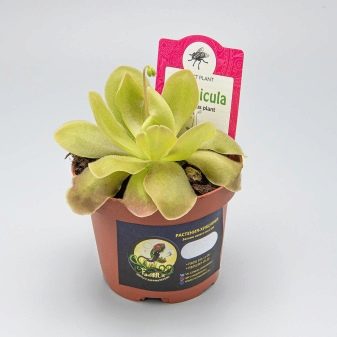
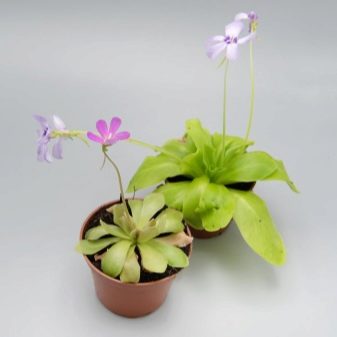
Care
It is quite possible to grow zhiryanka at home, but in this case the plant will form long peduncles with small buds resembling violet flowers. Usually, flowers of homemade zhiryanka have a rich purple or lilac hue.
In order for the plant to quickly take root, it is worth following agrotechnical recommendations and making sure that the culture is comfortable.
Temperature
The optimal temperature regime for Zhiryanka is 25-30 degrees Celsius in the summer and 15-18 degrees in the winter. The plant tolerates heat well up to 35 degrees, but in this case it is worth increasing the watering of the plant. And you should also increase the humidity in the room so that the plant can survive high temperatures.
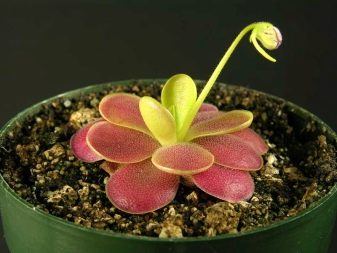
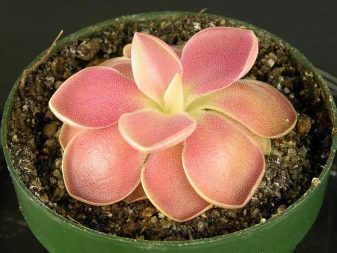
Spraying
Florists strongly recommend that you forget about spraying, rubbing and washing the leaves, stems and petals of the plant. Otherwise, there is a high probability of damaging the elements of the fat and provoking the development of decay processes.
It is recommended to take care of the humidity indicator in the room where the plant stands. Grease should be placed on a pallet filled with expanded clay at the bottom. And you can also rearrange the plant in the terrarium, where it is many times easier to take care of the microclimate.
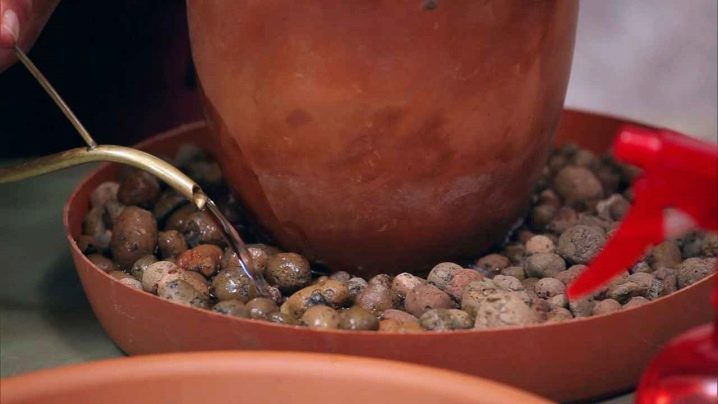
Lighting
Zhiryanka practically does not require special lighting. The amount of natural light that enters through the window is enough for the plant. In this case, it is recommended to place the pot away from direct sunlight so as not to burn the leaves.
Recommendations for choosing a location with optimal lighting.
- It is best to place the pot on a windowsill that is in the east or west.
- The flower can also be removed deeper into the room, as the fatty woman will be comfortable with a minimum amount of sunlight.
- If necessary, you can put an ultraviolet lamp next to the culture and periodically organize light baths for the zhiryanka.
The culture, regardless of the variety, will grow well both with a sufficient amount of natural light, and with a lack of it.
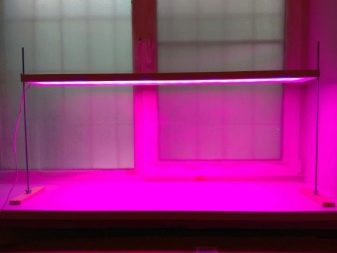
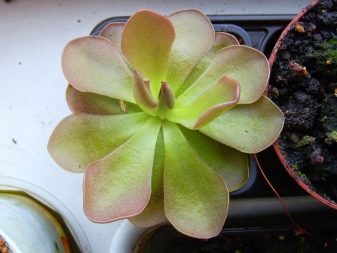
Watering
On an average fatty plant, during growth, when the plant is still young, not much water is required. It is recommended to water the flower every 3 days. In winter, the frequency of watering should be reduced. It is necessary to add water to the soil at this time of the year at least once a week - this will be quite enough.
For irrigation, you must use warm and previously settled water. In the process of introducing moisture, care should be taken that it does not get on the leaves and stems, as this can cause burns or provoke the development of rot.
Ignoring this recommendation will lead to the death of the flower.
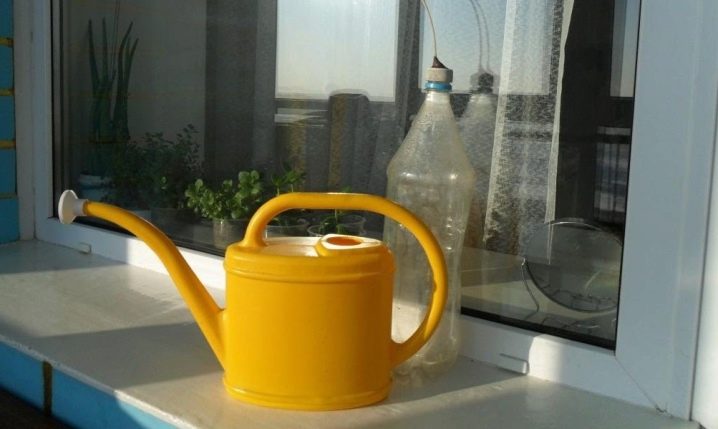
Disembarkation
It is necessary to plant the fat in a pre-selected container. Preference should be given to spacious pots, where the plant can grow in breadth.And you should also take into account the presence of a drain hole so that moisture does not stagnate in the pot. Otherwise, the roots of the flower will begin to rot, which will lead to the rapid death of the fat.
The next point to consider is the soil mixture.
- The soil must be moisture and breathable.
- Soil acidity should be above average.
- The substrate should contain particles of peat, sand and vermiculite.
The latter, if necessary, can be replaced with moss fibers. If the soil is not acidic enough, you can use special fertilizers that can change the pH value.
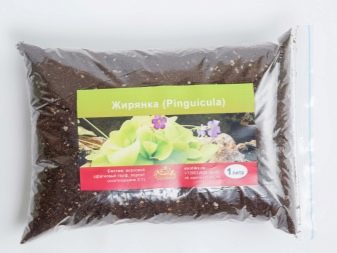
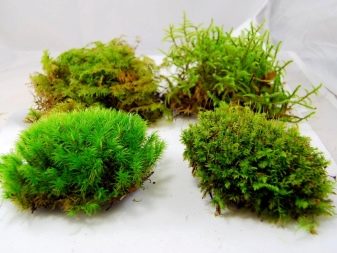
Top dressing
Zhiryanka practically does not need additional soil fertilization. On the contrary, it has been proven that excess nutrition can harm the plant and cause its death. Many inexperienced gardeners make the mistake of trying to artificially feed the plant with insects. It is also not necessary to do this, the flower is quite capable of independently obtaining the necessary amount of food for itself.
If necessary, the fatty woman can be helped by laying out a small amount of fruit near the pot, onto which the future food of the predator flocks.
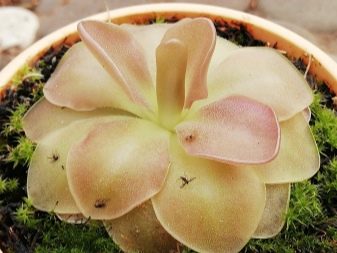
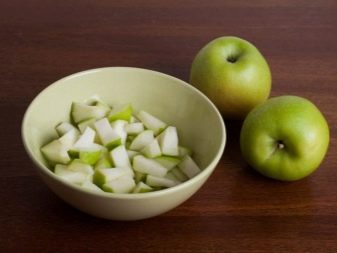
Transfer
For the first few years, the zhiryanka is actively growing, therefore, it requires timely transplantation into a more spacious pot. Usually, the procedure is carried out about once a year during warm and sunny seasons.
- The plant is carefully dug up.
- Placed together with an earthen lump in a previously prepared new pot.
- Fertile soil is poured, closing the cavities.
If you wish, you can remove some of the already used soil. But this must be done carefully so as not to harm the weak small roots. Otherwise, the risk of flower death increases.
When the fat grows up and stops actively expanding, you can transplant less often. Usually the pot is changed every 2 years.
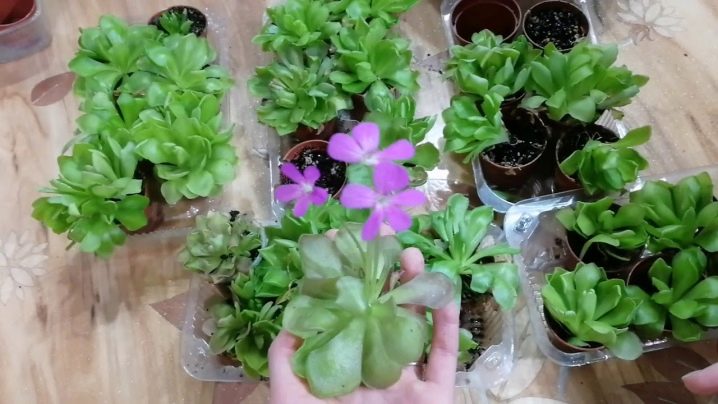
Pruning
Pruning the plant is optional. Florists advise from time to time to inspect the flower for the presence of withered, infected or deformed leaves in order to remove them. This approach will preserve the attractive appearance of the fat, will help direct the forces of the plant to active growth, and not to maintain damaged leaves or stems.
Caring for the fatty plant at home does not require careful attention to pruning; you can only remove dried or deformed leaves and peduncles from time to time so that the fatty plant does not lose its decorative effect.
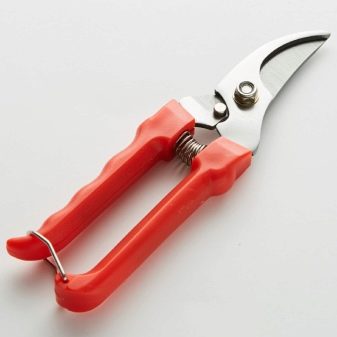
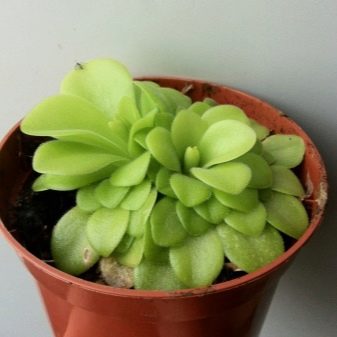
Rest
The rest period for Zhiryanka, like most plants, occurs in winter. At this time of the year, it is recommended to reduce watering by a third, as well as reduce the temperature and humidity indicators in the terrarium or room where the flower is located.

Reproduction
Florists distinguish several ways of reproduction of the fatty woman.
Seeds
The optimal breeding method, which implies planting seeds in the ground. The downside is that the technique does not always give the desired result due to the low survival rate of seeds.
- Seeds of zhiryanka are pre-selected and disinfected.
- Sow in light and moisture-permeable soil, pre-fertilized with special compounds. When sowing, the seeds are not buried or sprinkled with earth at the end.
- Cover the container with film or transparent glass to achieve a suitable microclimate for the flower to take root.
Next, the container is placed in a warm room with a temperature of up to 24 degrees Celsius. In this case, it is worth taking care of lighting and humidity. In this state, the seeds are kept for a couple of weeks. It is important to ensure that the roots do not start to rot. Florists advise, in order to prevent the development of diseases in seedlings, to regularly open the film to ventilate the homemade greenhouse and avoid sudden temperature changes. After 2-3 weeks, the sprouts can be transplanted into larger pots.
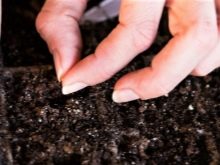
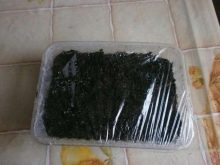
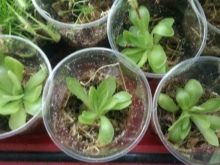
Cuttings
Reproduction is carried out in the fall.
- Cuttings are carefully removed from the base.
- Places of cuts are treated with pre-crushed coal.
- Place the cuttings in prepared peat pots.
When the roots appear, the cuttings can be transplanted in separate containers. For the first 2 weeks, you can cover the surface with a transparent material so that the plant takes root faster and starts active growth.
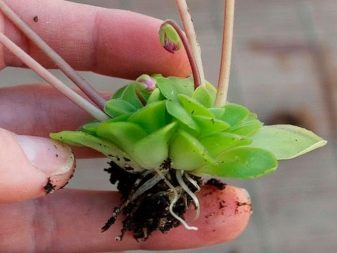
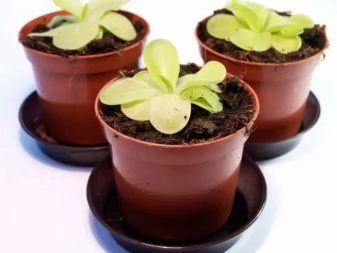
Diseases and pests
Zhiryanka is a plant that is quite resistant to diseases and pests. Basically, damage to leaves and stems occurs when growing conditions are not followed.
- Installing the pot in direct sunlight. Drying or darkening of the leaves will be a characteristic symptom. To prevent the death of the plant, it is worth rearranging it in a darker place.
- Lack of moisture. In this case, the likelihood of drying out of the leaves is high. In order for the fatty to come to life, watering should be normalized and the necessary humidity regime should be provided.
- Placing the pot in a place that is too dark. If the plant does not have enough light, it will stop blooming.
And also fatty oil can begin to rot during a dormant period with an increased humidity. Watering should be reduced so as not to lead to the death of the flower.
As for pests, they are not particularly interested in and even afraid of plants. However, in too dry climates, spider mites are likely to appear.

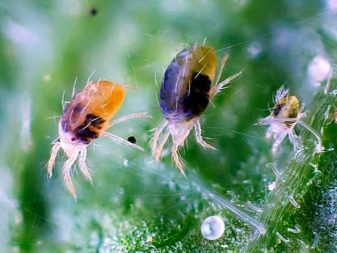































The comment was sent successfully.